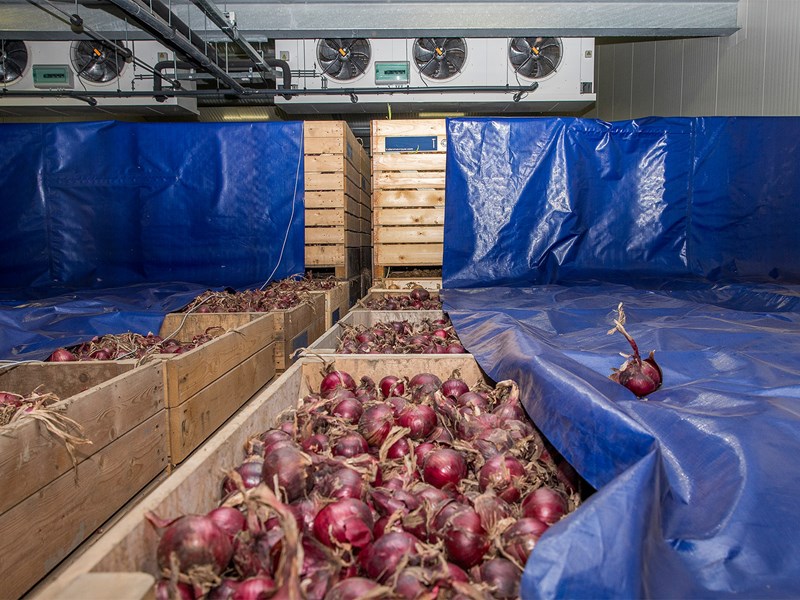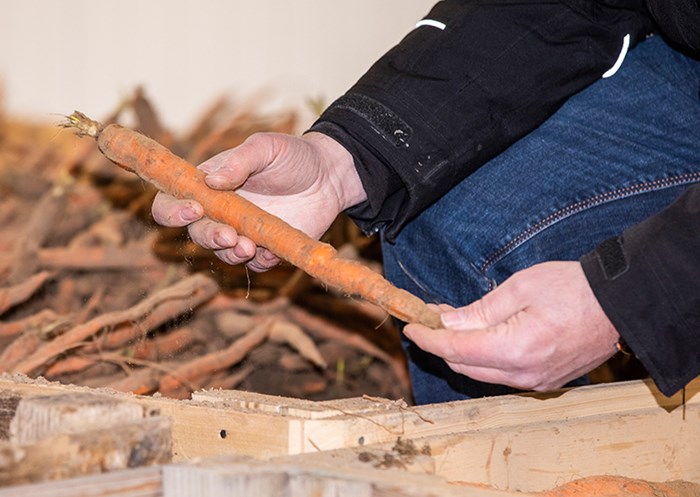
What is the difference between condensation drying and mechanical cooling?
With condensation drying and mechanical cooling, you can preserve product quality for longer during storage, with fewer or even without sprout inhibitors. When it comes to sustainability and energy efficiency, both systems are more or less identical. EQUANS’ storage specialist Henk Tebben, therefore, gives an insight into the differences and possibilities of both innovative storage systems.
To heat or not to heat
“Both intelligent mechanical cooling and condensation drying offer stable storage conditions. The computer program continuously measures the temperature, humidity and CO2 in the storage unit and adjusts the cooling capacity and the storage program to the cooling demand of your product. This offers you full control over the various stages of the storage process. However, with condensation drying, you can re-use the heat released during the cooling process. By heating the air with the released heat, it absorbs moisture again and products dry faster. Condensation drying also makes it possible to heat the products to combat diseases. A heat pump then uses the heat released during the cooling process (drying process) to heat products or keep them at the right temperature.”
Your product is decisive
“Which storage system you choose as a grower depends on whether you want to heat or not. And in that case, the product is decisive. Mechanical cooling is sufficient when moisture in the product can evaporate through a large surface, such as with carrots, leeks, and potatoes. When moisture can only evaporate via a small surface, you need to trigger the energy flow. That is the case with onion as it can only dry through its neck, or garlic and ginger, for instance. For those products, condensation drying is a wiser choice. At the same time, condensation drying is also interesting for sweet potatoes, as they require a temperature of 28°C to ferment, so to become sweet. Storage afterwards needs a temperature of 14°C to keep the sugars intact.”
With or without exterior shutters
“Your desire to use the outside air or not is also decisive. Both systems can operate completely without outside air. This is very favourable because any sprout inhibitor remains indoors in closed storage and does not evaporate. However, condensation drying can also be equipped with exterior shutters. Thanks to our refined hatch control, you can take advantage of favourable outside air conditions and combine them with the drying capacity of the condensation dryer. The smart control system can control the hatches and thrust the fans extremely accurately. In case the outside air conditions are unfavourable, the system automatically switches to a closed environment. That way, you have the best of both worlds.”
Budget
“If we take a look at the investment, condensation drying can be more expensive, but that is certainly not always the case. The bigger the installation, the smaller the investment per tonne of product. It is all about what you want to do with the product. About energy savings. And about maintaining product quality. The capacity of the design also plays a role. In the ideal situation, you have capacity available when it is needed and save energy when possible. EQUANS calculates every situation and offers a solution for every budget.”
